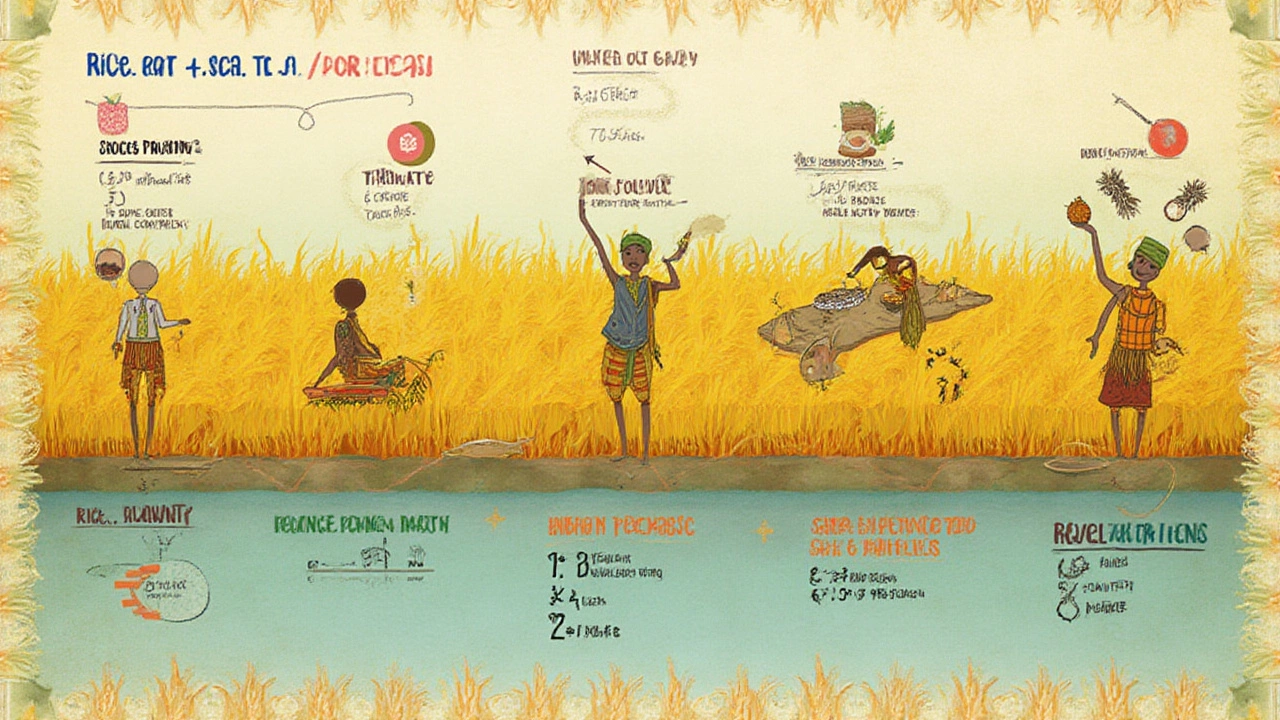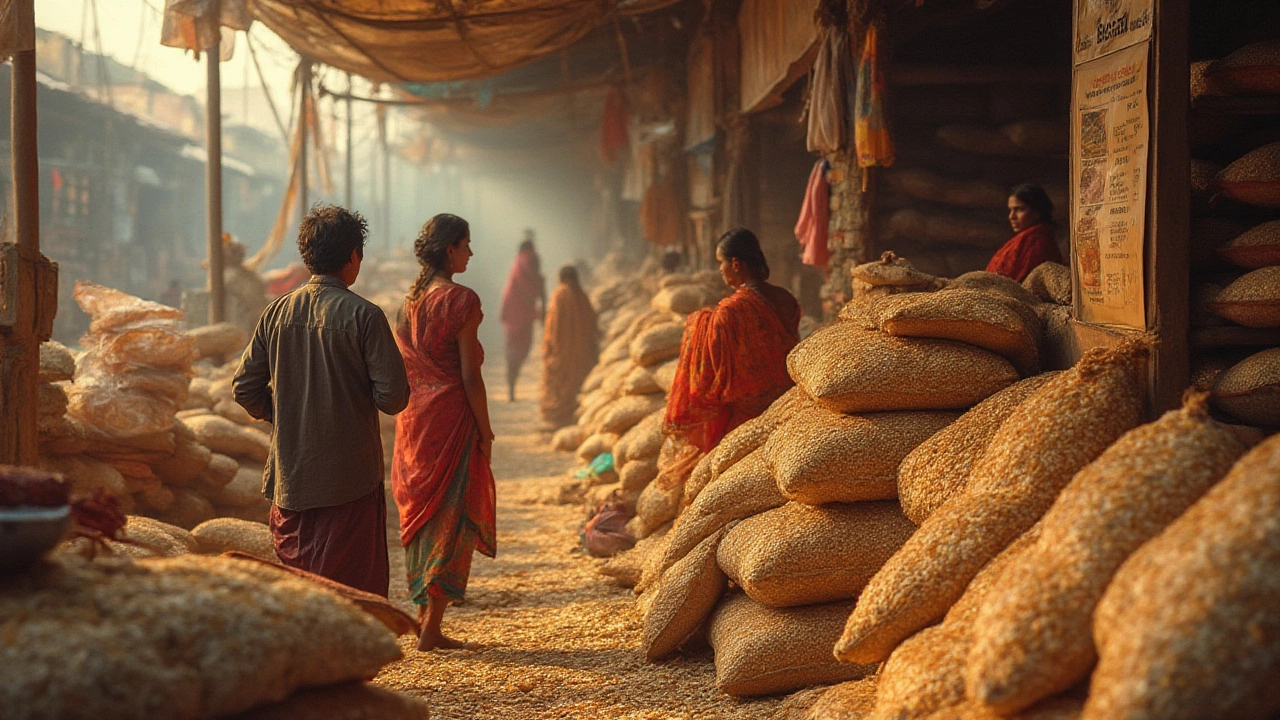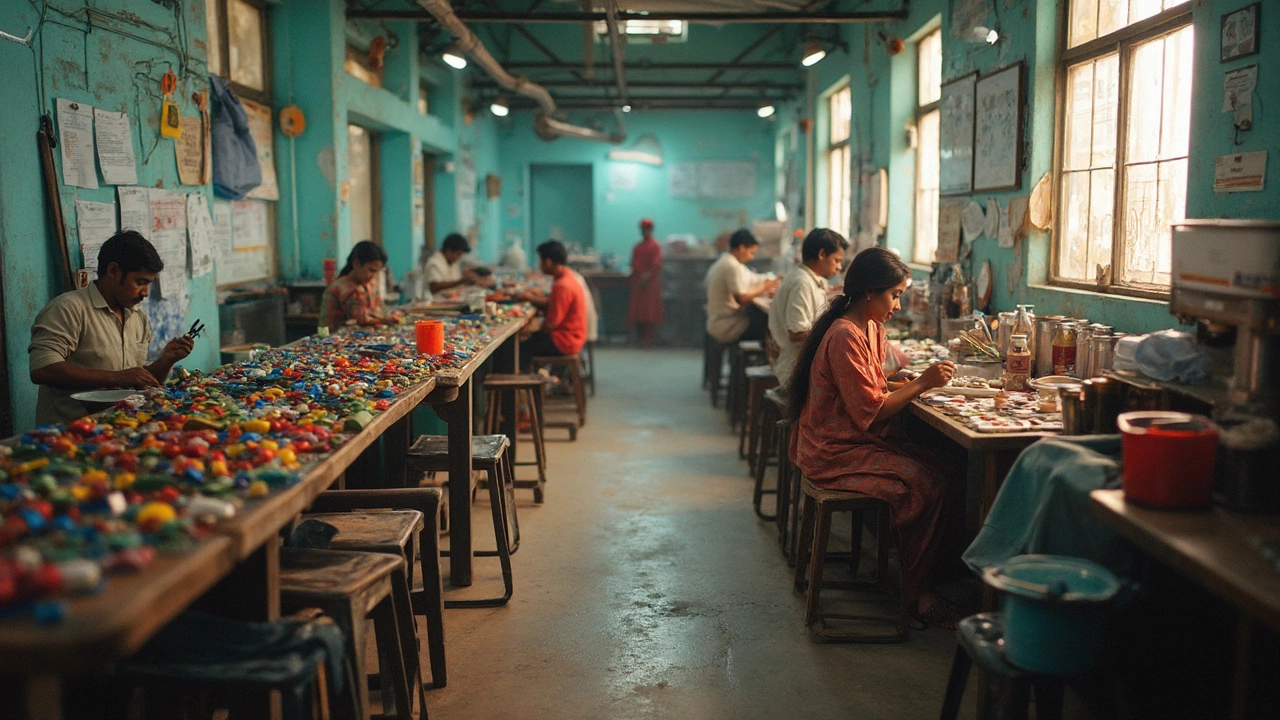How Much Rice Does One Person Need for a Year? The Real Numbers Explained

Picture this: you open your kitchen pantry, and there it is—a massive sack of rice. But is it enough to keep you alive for a year? Rice is more than just a staple—it's the backbone for over half the global population’s diet. If you suddenly had to rely on nothing else, how much would you actually need to survive 365 days? The answer isn’t just a number—it’s built on nutrition, calorie math, storage tips, and the fascinating science behind this everyday grain.
The Science Behind Rice and Survival: Nutrition and Calorie Basics
Let’s cut right to the core. To survive—just survive, not thrive—a human needs calories more than anything. The minimum daily requirement for adults hovers around 1,800 to 2,200 calories if you’re not overly active. But if all you have is rice, you’ll also need to keep a close eye on essential nutrients—rice on its own can’t give you everything your body craves long-term, like certain amino acids and vitamins.
First, how many calories are packed into rice? 100 grams of uncooked white rice contains approximately 360 calories. That might sound like a lot, but let’s break it down. A typical serving (about 1/2 cup uncooked or one full cup cooked) offers roughly 180 calories. If you want to cover just the calories and nothing else, you’d need around 500 grams (a bit more than a pound) per day to hit 1,800 calories (5 x 360 = 1,800). Most nutritionists agree that’s the absolute minimum if you’re not doing anything strenuous.
Now, for the stats fans, here’s what that looks like in a table:
| Calories Needed/Day | Rice Needed/Day (Uncooked) | Rice Needed/Year (Uncooked) |
|---|---|---|
| 1,800 | 500g | 182.5 kg |
| 2,000 | 555g | 202.6 kg |
| 2,200 | 610g | 222.7 kg |
So, for the average Joe aiming for 2,000 calories per day, you’re looking at about 202 kg of uncooked rice annually. For context, that's just over four standard 50 kg bags. Stay tuned, because there’s a lot more to consider—rice isn’t magic food.
Types of Rice and Their Impact on Your Survival Stash
Rice isn’t just rice. There are dozens of varieties, and yes, they make a real difference. White rice, brown rice, jasmine, basmati—they all have slightly different calorie counts and shelf lives. For survival, most people reach for white rice because it can sit on a shelf for a decade or more if it’s kept dry and sealed. The outer husk is removed, though, robbing it of some fibre and nutrients.
Brown rice isn’t as shelf-stable—it can go rancid within six months to a year if stored in a regular cupboard. That's because its nutritious bran layer contains oils that spoil much faster. But nutritionally, brown rice wins hands down, offering magnesium, potassium, and a bit more protein and fibre. If you can guarantee cool, dry storage with no pests, you might give brown rice a second thought. Otherwise, white rice is your friend for the long haul.
Different types also change the maths a bit. For example, brown rice has fewer calories per 100g (around 350) thanks to slightly higher water and fibre content. Wild rice—which is not technically rice, but a grass—packs in more protein, but it’s far more expensive and harder to store.
Here’s a quick rundown:
- White rice: Long shelf life (up to 10 years properly stored), 360 cal/100g, low fibre, easy to digest.
- Brown rice: Short shelf life (6-12 months), 350 cal/100g, better nutrition profile, goes off quicker.
- Jasmine/Basmati: Similar calories to white rice, slight variations in gut feel/flavour.
- Wild rice: 357 cal/100g, high protein, pricey, needs more water and energy to cook.
A good tip: Don’t just store one kind. If you like a bit of variety and want to squeeze in extra nutrition, mix your stash with both brown and white rice. Rotate the brown rice so it never gets stale, and save white rice as your emergency backup.

Planning Your Annual Rice Supply: The Maths in Practice
Let’s put theory into practice. Say you’re a moderately active adult, needing 2,000 calories a day. If rice is your only source, you’re hoovering through 555 grams per day. In a year, that adds up to 202.6 kilograms, or just over 445 pounds. Sounds daunting? It’s actually not unheard of. Many families in East Asia buy rice in big sacks for this reason. If you have a family of four, multiply everything by four—so you’d need over 800 kilograms for the year.
But what if you eat rice with other foods—veggies, beans, or even an occasional piece of chicken? Naturally, your rice needs drop, maybe by half. So if you aim for survival with rice as only 50% of your daily calories, you might get away with just over 100 kg per person, per year.
Here’s a handy checklist for planning your rice stockpile:
- Calculate daily calories you want to cover with rice (e.g. 1,000 - 2,000 calories).
- Divide by the average calories per 100g (360 for white rice).
- Multiply grams needed by 365 for annual total.
- Add at least 10% extra for spillage, leftovers, spoilage, or pests.
If you work out, garden, or walk a lot, adjust upwards—you don’t want to run short.
Let’s not ignore the elephant in the room—just rice, every day, for months? It’s not a good idea for your taste buds, and long-term, it can harm your health. Doctors warn that rice-only diets can lead to scurvy (vitamin C deficiency), protein deficiency, and more. You’d better add some lentils, beans, or powdered multivitamins if you’re prepping a one-year rice stockpile for emergencies.
Storage Tips: Keeping Your Rice Edible for the Long Haul
Buying the right amount is just half the battle—storing it right is where many people slip up. Rice is vulnerable to bugs, moisture, and temperature swings. If you get this wrong, you could open your container to a smelly, insect-infested mess after just a few months. Bleh.
Here’s what actually works. Airtight containers are a must. Think heavy-duty plastic buckets with rubber seals, or thick glass jars. Vacuum sealing is not just for coffee—if you have the kit, seal rice in meal-sized portions and toss them in the freezer for a few days first. This kills any bug eggs that hitchhiked in from the rice mill. My neighbour keeps his rice stash with little bags of food-safe oxygen absorbers, which zap the air inside the container and stop nasty stuff from growing.
Store rice somewhere cool and dry. The back of a kitchen cupboard often works great in cool climates like here in Birmingham, but basements can be risky if they get damp. Don’t forget to label the bags with the date. If you notice off smells, odd colours, or obvious pests, ditch that batch—don’t risk eating it.
Bust a myth: you don’t need to refrigerate or freeze white rice after sealing if the container is airtight and in good condition. Freezer space is precious—save it for stuff that actually needs it.
If hunger strikes and you’re dipping into your rice stock every day, always use clean, dry utensils. Even a drop of water can spark off mold over time. Wash rice before cooking to get rid of excess starch and possible contaminants.
Want to go next level? Rotate your rice every year—eat the old batch and refill with a fresh one. That way, your stash is always ready if you need it, and you don’t have to waste a single grain.

Rice Economics: Cost, Availability, and How to Stretch Your Stash
Let’s talk money—no point in stockpiling rice if it puts a big dent in your wallet. Wholesale prices for white rice in the UK as of 2025 hover around £1 per kilo if you buy big bags. In Asia, it’s even cheaper. So, your 202 kg annual survival stash sets you back about £200. Brown rice costs a bit more, maybe £1.30 per kilo, but for better nutrition, some say it’s worth the extra.
Big supermarket chains and Asian wholesalers sell 10-20 kg sacks, which often offer better value. If you live near one of Birmingham’s Asian grocers, you’re spoiled for choice. Online delivery isn’t bad either for bulk buying, if you don’t mind the odd shoulder ache from lugging sacks indoors.
Looking to make your stash go further? There are a couple of simple tricks. Add beans, lentils, or other pulses—these cost less than rice and boost your protein intake. Mix rice dishes with frozen veg or tinned tomatoes when supplies allow. Even a handful of fresh herbs from your garden can make a bland pot of rice taste so much better.
Funny enough, rice eaters around the world have developed a knack for squeezing more out of less. In India, cooks toast rice to intensify its flavour. In Japan, leftover rice is turned into congee or rice cakes to avoid waste. There's zero shame in stretching a small stash this way—if anything, it's smart.
Emergency food planners and preppers aren’t the only ones who could benefit from this knowledge. Anyone keen to save money, reduce food waste, or just get more intentional about their pantry stockpile can put these tips into practice.
So, how much rice does a person need to survive a year? About 200 kilos, if it’s your main fuel. If you eat smarter, stretch it with other foods, store it right, and season it with a little creativity, you’re not just surviving—you’re quietly thriving, one bowl at a time.





